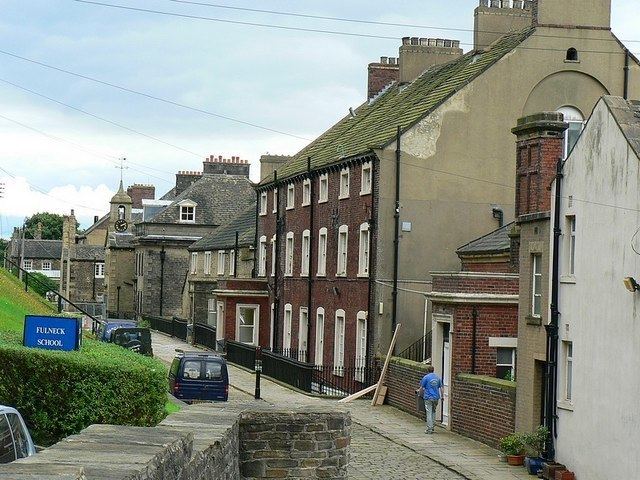Established 1753 School Principal Mrs D. Newman Chairman of Governors Mr T. Smith Color Blue | Vice Principal Mr D. Newman Phone +44 113 257 0235 Number of students 380 | |
 | ||
Type Independent schoolnon-selective Address Fulneck, Leeds LS28 8DS, UK Motto In essentials unity, in non essentials liberty, in all things charity. Similar Woodhou Grove School, Rose Court Nursery and Pre, Froebelian School, Moorlands School, Bradford Grammar School Profiles | ||
Fulneck school on songs of praise
Fulneck School is an independent day and boarding school, situated in the Fulneck Moravian Settlement, in Pudsey, West Yorkshire, England. It provides education for pupils between the ages of 3 and 18.
Contents
Fulneck school
History
In 1753 and 1755, The Boys' and Girls' Schools were opened by the Moravian Church. In 1992 the two schools became one. The Moravian Brethren and Sisters' communal houses are now, also, part of the school.
In 2008 the school reopened a building and renamed it the Robinson Building, which now serves as a learning centre for maths, geography, art and food technology
In 2014 the school extensively refurbished Joan Mort House, the building that houses the Sixth Form Centre.
When Fulneck first opened the pupils would sleep at the top of the church. Now the school has boarding facilities for both girls and boys, which are located on the upper floors of the main school building.
Fulneck School has a Learning Support Unit and has been registered as a 'DU' category school by CReSTeD (Council for the Registration of Schools Teaching Dyslexic Pupils), which means it has a designated unit for the teaching of pupils with dyslexia on a one-to-one or small group basis. Fulneck is one of only a few mainstream schools in the North of England to be registered as 'DU' category, and dyslexic pupils perform exceptionally in GCSE and A level exams each year due to the support they receive.
Fulneck is a non-selective school with an inclusive admissions policy. Children of all academic abilities are stretched, challenged and supported, with high achievers gaining A* and A grades. The majority of students in the Sixth Form go on to study at university while some enter apprenticeships and employment. Some students take part in a Multiflight training scheme at Leeds Bradford airport and a number have gone on to pilot training at Oxford Aviation Academy.
